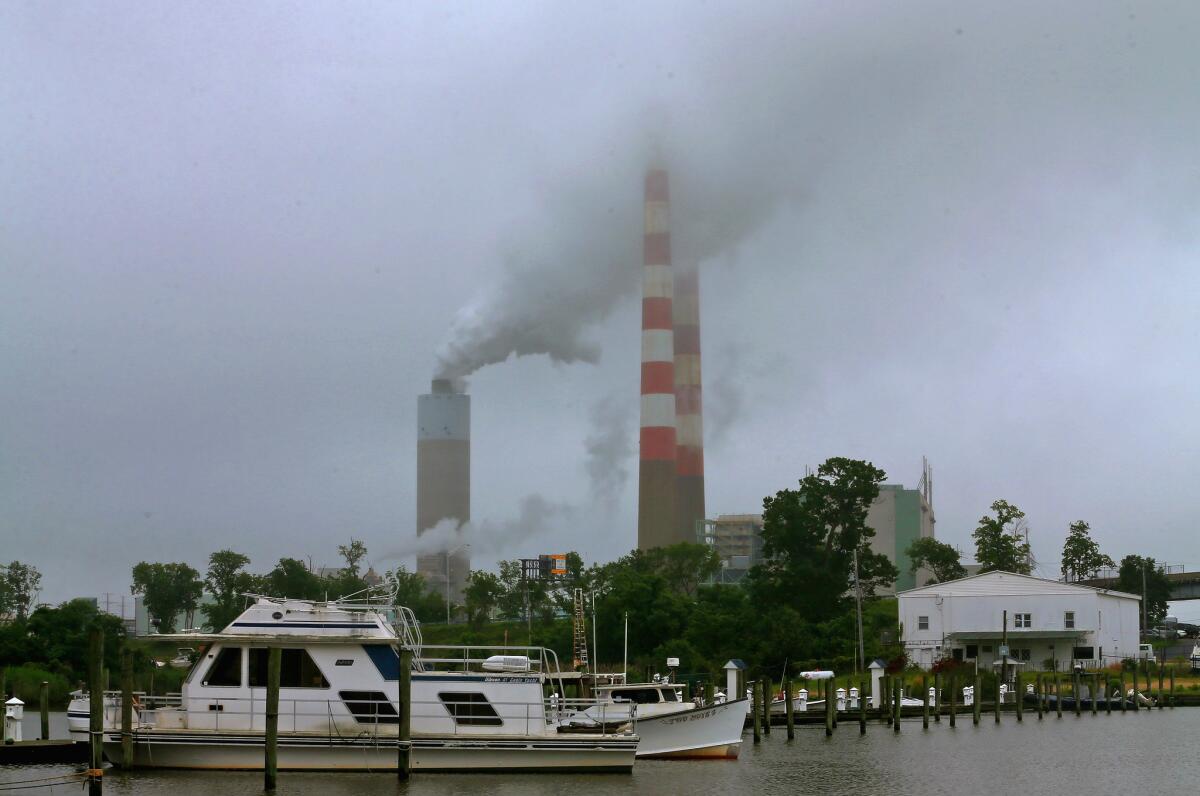Environment trumps politics: The U.S. takes a stand on climate change

- Share via
In a single stroke Monday, the Obama administration opened a two-front war against the forces of scientific ignorance and political inertia.
Its weapon was a policy proposal aimed at cutting carbon dioxide emissions from U.S. power plants 15% to 17% from current levels (or by 30% from the baseline year of 2005). Industry lobbyists and the GOP started lining up against this plan even before its formal announcement by EPA Administrator Gina McCarthy. She set the terms of the battle: “For the sake of our families’ health and our kids’ future, we have a moral obligation to act on climate.”
The industry pushback is weak, supported by suspect and very watery statistics. What we can learn from that, and from the progress that industry already has made toward the 2030 goals over the last decade, is that the White House could have, and should have, made the policy more ambitious. Leaving that aside for the moment, Monday’s policy announcement is momentous--”arguably the most important step any country has taken to combat climate change,” as my colleague Neela Banerjee reports.
In a normal political environment, the new policy would be seen as a superb finesse of the main objections to anti-emissions proposals of the recent past. The new goal falls short of the target Obama set on the eve of the 2009 climate change talks in Copenhagen--for a 17% reduction from 2005 emission levels by 2020. But it marks an explicit commitment to a phased reduction in emissions, with a deadline.
What is politically more important is that the new plan leaves the mechanisms of reductions in the hands of the states. That’s a recognition that states and regions differ in how far they must travel to reach the ultimate goal, and differ in their reliance on coal, the most polluting generation source.
California, for example, is far ahead of most other states in reducing its emissions of carbon dioxide per unit of generated energy--30% to 35% lower than states heavily dependent on coal such as West Virginia, Kentucky and Wyoming. California generates much more electricity than they do, so it will still be under the gun to cut emissions. But as a just-released study from Syracuse and Harvard universities found, every state and every region will benefit from reducing pollution.
Under the EPA rules, states can fashion their own menu of options--cap-and-trade policies (California is a leader there, too), power plant retrofits, incentives for renewables, conservation.
The industry objections amount to the usual claim that the policy is too expensive--implicitly, that any effort to reduce power plant emissions is too expensive. Yet as Jonathan Chait observes, the numbers put forth by the U.S. Chamber of Commerce, among others, actually aren’t all that scary. The Chamber projected an increase of $17 billion a year in energy costs, based on its expectation that the White House would call for a 42% reduction by 2030 from the 2005 baseline.
But $17 billion isn’t much in terms of the U.S. electricity market--it’s only 5% of the $350 billion Americans spend annually on power. Moreover, the figure doesn’t take into account all the economic gains to be reaped from lower emissions. Among them are health benefits--lower rates of cardiac problems and bronchitis among older Americans, and less asthma for children--and gains from the growth of innovative new industries. “We’ll turn climate risk into business opportunity, we’ll spur innovation and investment, and we’ll build a world-leading clean energy economy,” McCarthy predicted Monday.
It’s also proper to point out that knee-jerk caterwauling about the cost of regulations is nothing new; it’s a perennial part of the campaign against auto safety regulations and banking disclosure rules, and it was the linchpin of the business campaign against the 1990 Clean Air Act amendments.
“These claims are political fodder, they are provocative, and they are always wrong,” says Peter Gleick of the Pacific Institute, referring to campaigns against environmental and health regulations. “In fact, the evidence shows the opposite: environmental regulations consistently produce enormous net benefits to the economy and to human health.”
The fight against the new rules will be bloody, and very political. But scarcely a day passes without new evidence of the toll of climate change. The rules are not sufficient to arrest this elemental change in the world environment. but they are necessary--as a first step.
More to Read
Inside the business of entertainment
The Wide Shot brings you news, analysis and insights on everything from streaming wars to production — and what it all means for the future.
You may occasionally receive promotional content from the Los Angeles Times.











